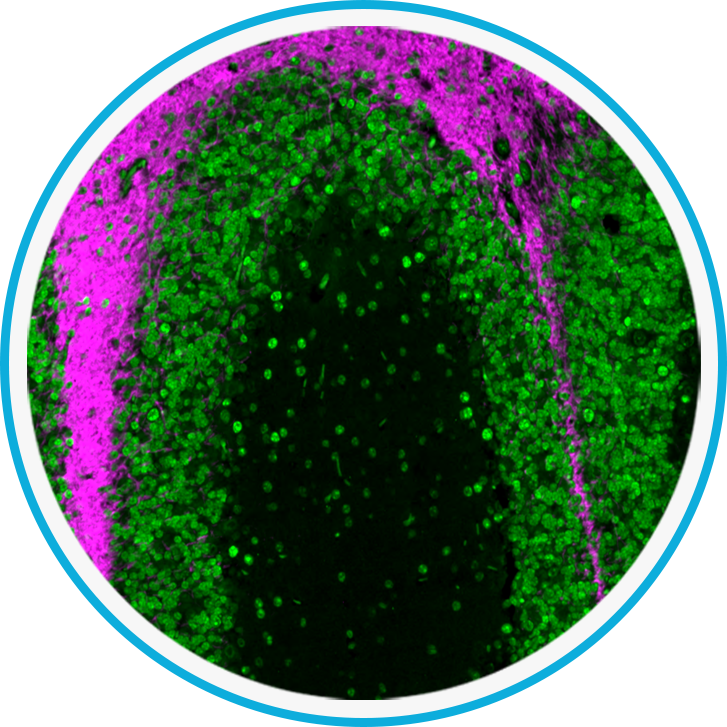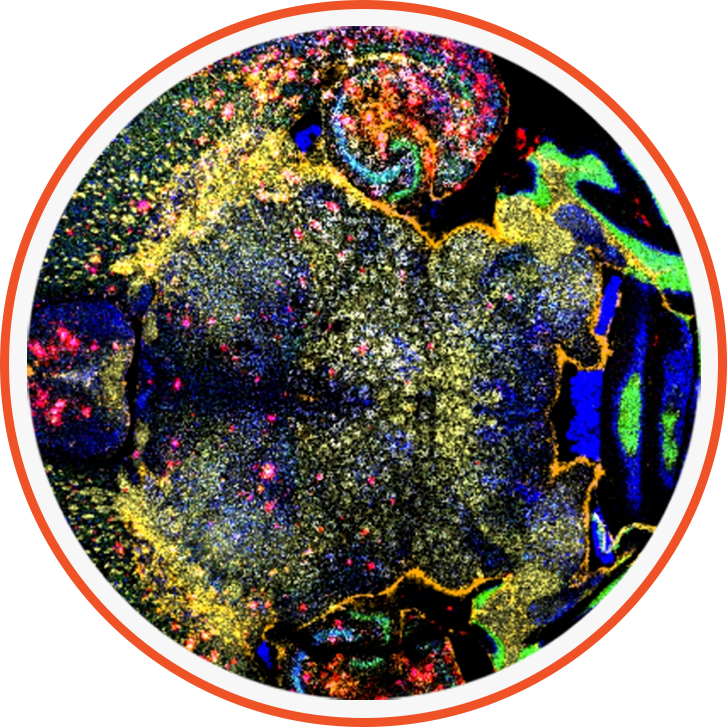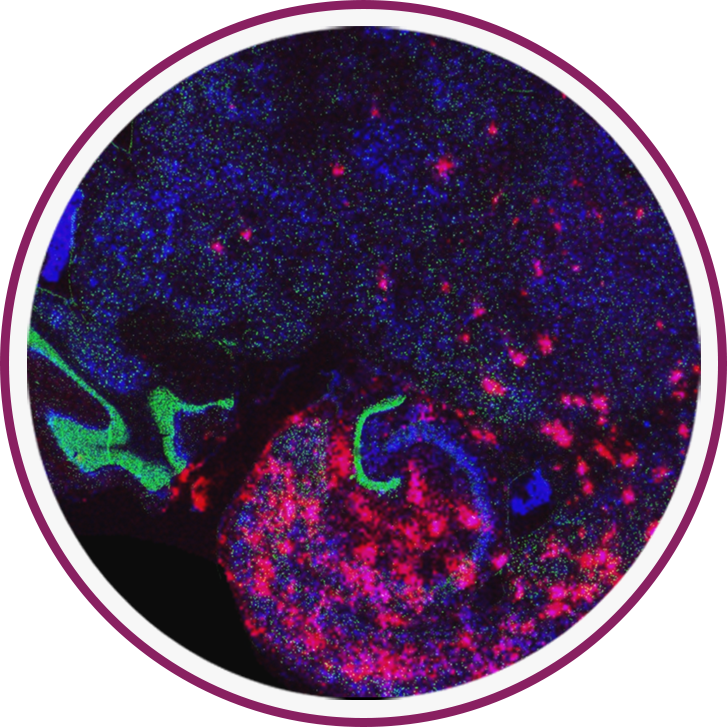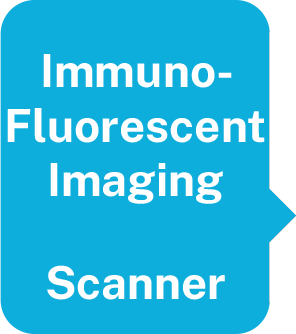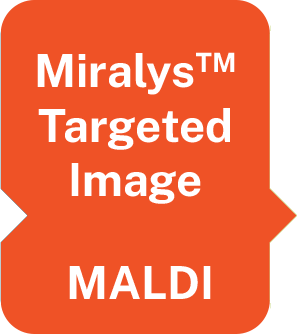Enabling Multiomics
Miralys™ delivers the broadest spatial multiomic imaging in mass spectrometry
Spatial multiomic imaging reveals spatial patterns of of biomolecules within tissues, helping scientists understand complex biological systems, uncover disease mechanisms, guide precision medicine, accelerate drug discovery, and foster biomedical innovation.
Miralys builds upon the already strong spatial multiomic capabilities of matrix-assisted laser-desorption/ionization (MALDI) imaging to add new layers of biological insight. Now, researchers can visualize over 100 intact targeted protein distribution in the same tissue sample in which they have already imaged unlabeled small molecule such as drugs, lipids and other metabolites.




